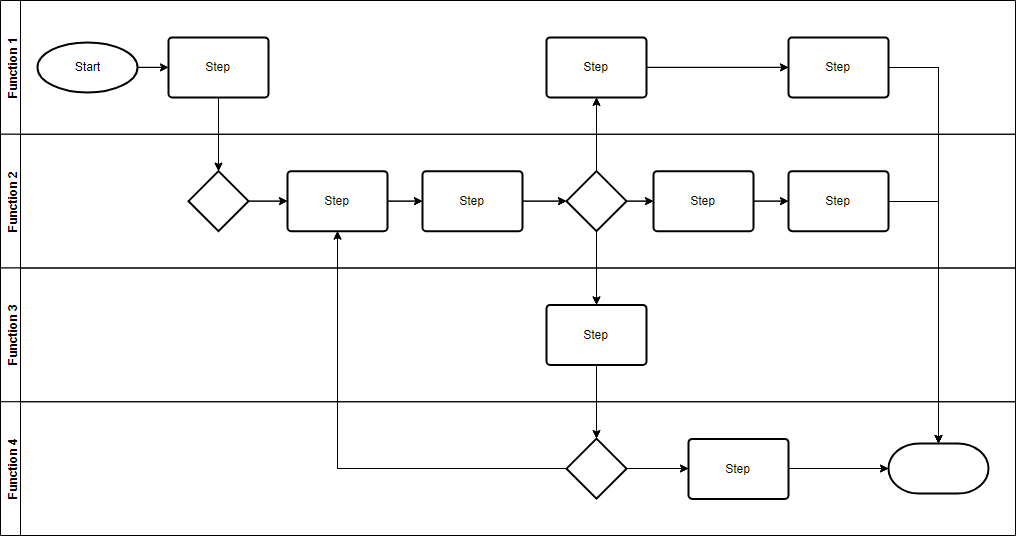The Ultimate Guide To Six Sigma Process Map

As we have previously covered on this blog, the primary purpose of Lean Six Sigma (LSS) methodology is to eliminate waste and reduce variation in manufacturing, service and design processes, thus improving overall production quality and efficiency.
However, when implementing Lean Six Sigma into an existing process, it is important to understand every detail—part of the Define phase of the Define-Measure-Analyze-Improve-Control (DMAIC) method. One of the most effective ways of understanding DMAIC is to create a Six Sigma process map.
The Purpose of a Six Sigma Process Map

When working with a Lean Six Sigma project team comprised of six, ten, fifteen or more people, it is likely that each member of the team will have a different idea of how a process works and what can be improved. The purpose of a process map is to work together to create a common understanding of the process and how it should work. Key benefits of this exercise include:
- Identifying steps of the process that add complexity and need to be simplified
- Visually comparing the current process to the potential new process
- Making it easier for those outside the project team to understand the process
Process maps are useful in any environment where Six Sigma methodologies can be applied, from hospitals to manufacturing plants to restaurants and bars. In addition, Six Sigma process maps can be implemented at the beginning of a project or in the middle of an existing process to improve outcomes.
Creating a Six Sigma Process Map
When creating a process map, keep in mind that the map will resemble a flowchart depicting the start of the process, the middle steps, and the end—or desired outcome—of the process. The map may be a high-level overview, or much more detailed map that includes sub-steps for each major element. The type of process map you choose will depend on the complexity of your project, but each map should be completed as follows:
Determine the process boundaries
Where does the process begin and end? Using an emergency room as an example, the desired outcome may be to shorten wait times for patients. In this case, the starting point could be when the patient arrives and fills out their paperwork, and the end would be when the patient is discharged.
List all the steps in the process
In our emergency room example, the steps would include greeting the patient, having them fill out intake forms, entering the information into the computer system, and having the patient see the triage nurse. List the inputs and outputs associated with each step—the items or data that are received (input), and whatever should result from that step (output).
Place the steps in order
Be sure to arrange the steps in order of how the current process works to make it easier to identify areas for improvement.

Utilize the right symbols
Most Six Sigma process maps feature the same set of symbols, and each symbol represents a different action or point. Draw these symbols around each step of the process and be sure the entire team understands the meaning of each symbol. The most common symbols and their meanings are as follows:
- Terminator: Both the start and end of the process
- Rectangle: A step or task that must be performed as part of the process
- Oval: The inputs and outputs of a step or the entire process (commonly found at the beginning and end of the process)
- D: “D” symbols indicate delays in the process
- Arrow: Movement in the process—an indication of where the process flows from step to step
- Diamond: A point in the process where a decision must be made
Check your work
Review the map to ensure every step of the current process is listed and described correctly. Have someone outside the project team—but involved in the process—to analyze the map from their perspective to make sure nothing is missing.
Making the Most of the Six Sigma Process Map
After creating the process map and checking it for accuracy, it’s time to take the most valuable step: improving the process. Everyone on the team should analyze each part of the process and ask questions about how it can be improved. Is there an overarching problem with the entire process? Are there steps that are unnecessarily complex—or unnecessary altogether? What would the ideal process look like?
The process map can help the project team visualize each of these questions, enabling them to better reduce waste and continually improve the process—which is the heart of Lean Six Sigma methodology.
About Purdue’s Online Lean Six Sigma (LSS) Certificate Program
Purdue University offers comprehensive Lean Six Sigma online certificate programs designed for working professionals with varying levels of Lean Six Sigma experience. The online Lean Six Sigma certificate courses prepare professionals to satisfy the immense demand for Lean expertise, skills and certification.
Purdue offers the following courses 100% online:
- Lean Six Sigma Green Belt
- Lean Principles
- Lean Six Sigma Black Belt
- Lean Six Sigma Green Belt Refresher








